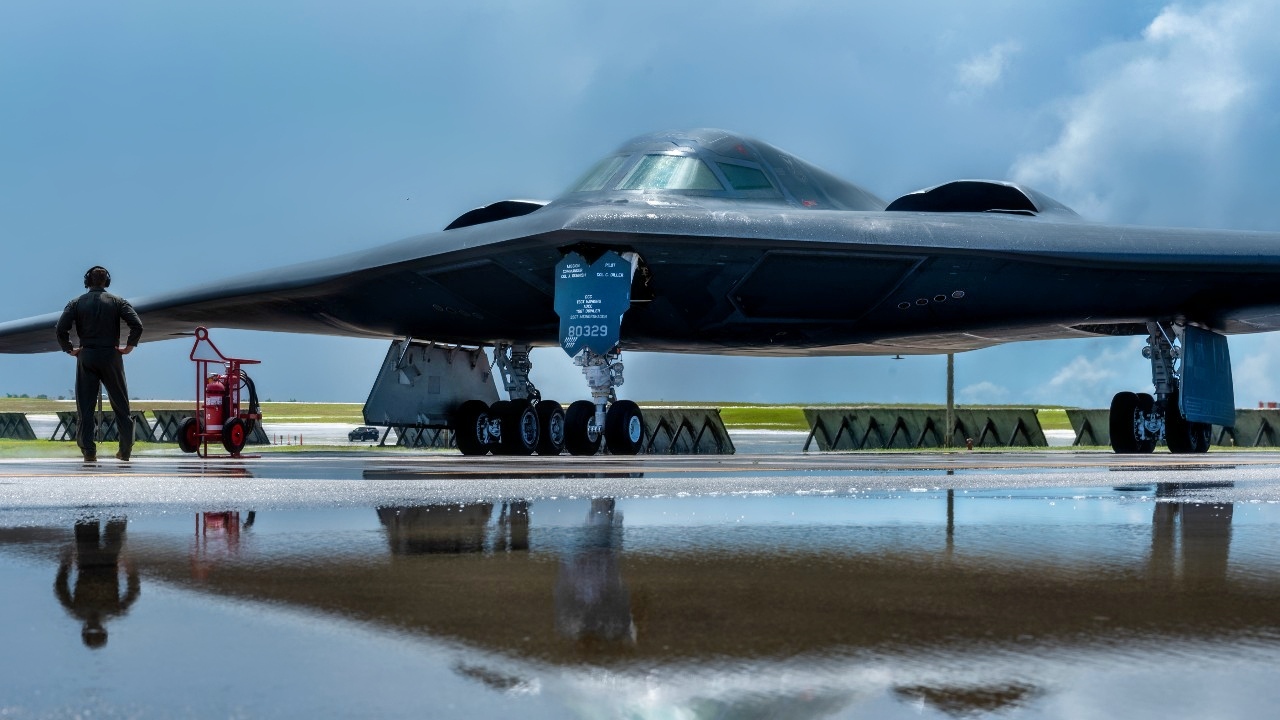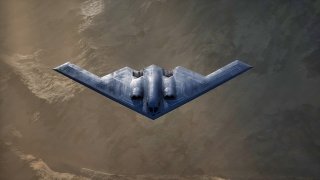U.S. Air Force B-2 Stealth Bombers Just Attacked Houthi Underground Bunkers
The United States Air Force deployed B-2 Spirit stealth bombers to strike underground bunkers used by Iranian-backed Houthi rebels in Yemen, marking the first combat use of the B-2 since 2017.
What You Need to Know: The United States Air Force deployed B-2 Spirit stealth bombers to strike underground bunkers used by Iranian-backed Houthi rebels in Yemen, marking the first combat use of the B-2 since 2017.

-The airstrikes targeted facilities storing advanced conventional weapons employed in attacks against military and civilian vessels in the Red Sea and Gulf of Aden. U.S. Secretary of Defense Lloyd Austin stated that the operation demonstrates America's ability to reach deeply buried targets.
-The Pentagon did not confirm exact locations, but reports indicate strikes near Sanaa, Yemen's capital. This action sends a strong message to Tehran and its regional proxies about U.S. capabilities and resolve.
U.S. B-2 Spirit Bombers Struck Houthi Positions
The United States Air Force just sent a strong message to Tehran and its regional proxies – namely that the U.S. has the will and the means to strike hard. Early Thursday local time, Northrop B-2 Spirit long-range strategic bombers were employed for the first time, targeting underground bunkers used by the Iranian-back Houthi rebels in Yemen.
The extent of the damage is unknown, but according to U.S. officials, the bunkers were used to store advanced conventional weapons that had been employed in strikes against military and civilian vessels in the Red Sea and Gulf of Aden. U.S. Central Command claimed that no civilians had been killed in the airstrikes.
"This was a unique demonstration of the United States' ability to target facilities that our adversaries seek to keep out of reach, no matter how deeply buried underground, hardened, or fortified. The employment of U.S. Air Force B-2 Spirit long-range stealth bombers demonstrate U.S. global strike capabilities to take action against these targets when necessary, anytime, anywhere," U.S. Secretary of Defense Lloyd Austin said in a statement.
"We will continue to make clear to the Houthis that there will be consequences for their illegal and reckless attacks," the secretary added while noting that he authorized the strikes to further degrade Houthi capabilities, at the direction of President Joe Biden.
Strike on the Houthi-controlled Capital
Though the Pentagon didn't confirm the location of the bunkers, the Houthi-run al-Masirah satellite news channel did report that there had been airstrikes near Sanaa, Yemen's capital city. It has been under the militant group's control since 2014.
According to The Associated Press, "the locations named by the Houthis on Thursday correspond to known underground bases operated by the rebels" – and consist of "refurbished tunnels that once held Scud missiles when Yemen was ruled by strongman Ali Abdullah Saleh." Analysis from the London-based International Institute for Strategic Studies (IISS) first confirmed the use of the tunnel complex in April.
"Those sites include the al-Hafa and Jebel Attan military bases, the former Presidential House and the Yemen state television compound in Sanaa," the AP added, citing IISS analyst Fabian Hinz.
The Tehran-backed group has also constructed additional tunnel complexes and underground bases – similar to those employed by the Iranian military and other groups it backs, notably Hamas in Gaza and Hezbollah in Lebanon.

The B-2 – Like Team Spirit
Thursday's attack on the Houthi complex would be the first time the U.S. Air Force has employed the B-2 Spirit in a combat operation since it was used to strike Islamic State targets in Libya in 2017. That mission, which is reported to have killed more than 80 militants, was also credited with disrupting ISIS activity in Europe.
It was also unclear at press time where the B-2 Spirits operated from, but the U.S. has previously deployed the long-range bombers from their home field at Whiteman Air Force Base (AFB), Missouri. Nineteen B-2s are currently in service.
During its first combat mission in 1999 – during Operation Allied Force over the former Yugoslavia where it was responsible for taking out 33% of Serbian targets – the B-2s flew non-stop to Kosovo and back. In support of Operation Enduring Freedom beginning in 2001 following the 9/11 attacks on the Pentagon and New York City’s World Trade Center, the B-2 flew some of its longest missions to date – traveling from Whiteman to Afghanistan and back. That required the two-person crew to spend upwards of 20 hours in the cockpit.
Author Experience and Expertise: Peter Suciu
Peter Suciu is a Michigan-based writer. He has contributed to more than four dozen magazines, newspapers, and websites with over 3,200 published pieces over a twenty-year career in journalism. He regularly writes about military hardware, firearms history, cybersecurity, politics, and international affairs. Peter is also a Contributing Writer for Forbes and Clearance Jobs. You can follow him on Twitter: @PeterSuciu. You can email the author: [email protected].
Image Credit: Creative Commons and/or Shutterstock.


